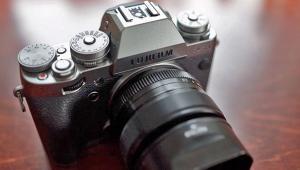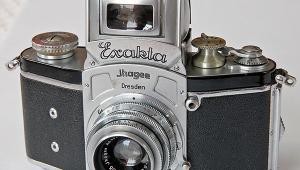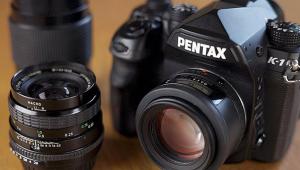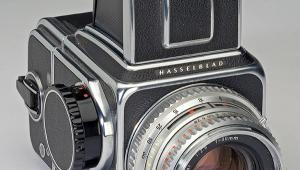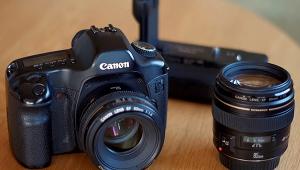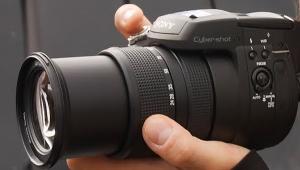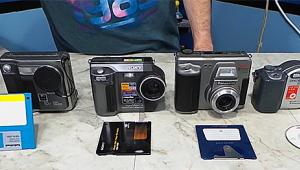The Canon F-1 35mm SLR; A Real Pro Of Its Time
When the Canon F-1 SLR 35mm camera system was introduced the spring of 1971 it was a full-blown system containing a brand-new, truly professional camera plus every extra accessory that any photographer could need or desire. The entire system was dramatically introduced at the unique Photo Expo '71 held at McCormick Place in Chicago. In the early '70s Canon products were imported and distributed by Bell & Howell Corporation, where I managed the company photo services. My staff and I all used these cameras extensively both in and out of the studio and also took publicity still photos for press releases.
This was back in the era of manually operated, mechanical cameras long before battery-powered electric motor drive and extensively computerized cameras existed. Thus some of the features touted for this new camera system 25 years ago seem antiquated today, but were actually advanced for that era.
 |
|
|
Among the major features was an unusually fast top shutter speed of 1/2000 sec with a focal plane shutter. It also featured increased accuracy of the manually set lower shutter speeds, down to 1 second, which were set on the combined shutter speed/ASA film speed dial on top. A new series of Canon FD bayonet-mount lenses could be metered through the lens, either by full-aperture opening for brighter viewing or stopped-down to check depth of field. Both meter readings and the shutter speed were visible on a long vertical rectangle outside the right edge of the viewfinder field. The CdS meter read the center of the frame and used a match needle system to set the exposure.
Although exposures were set manually on the basic camera, automatic exposure control could be achieved by adding a bulky Servo EE viewfinder. This would also function when used with an accessory electric motor drive, all without needing any special factory servicing or modifications. With the motor drive exposures up to three per second were possible. The drive included a built-in timer that could be set to intervals up to 60 seconds. When outfitted with the accessory 250-exposure long rollfilm back, unmanned fully automatic photography could be obtained.
Interchangeable Screens And Finders
There were four user interchangeable focusing screens located just below the removable viewfinder penta-prism, and five interchangeable viewfinders. Naturally there was the standard conventional eye-level prism. A really helpful Speed Finder contained two prisms with the back one capable of rotating so the extra-large eyepiece could either point straight up or straight back. This could be used easily with glasses or goggles and made ground-level or over-the-crowd shooting simpler. A Booster T prism amplified the meter sensitivity for shooting under low-light level situations. The Servo EE viewfinder made automatic metering possible. A conventional folding waist-level finder rounded out the optional viewfinders.
There was a PC flash terminal on the left side of the body, but no built-in hot shoe. Two versions of a small accessory hot shoe, called the Flash Coupler D and Flash Coupler L, easily slid over the rewind knob and made contact with two electrical contacts so hot shoe flashes could be used. The rewind knob had a safety lock button, which must be pressed down before the camera back could be opened. All components were extra rugged for long service under demanding professional uses.
 |
|
|
A Degree Of Flash Automation
Since electric eye sensors for flash automation were still years away, an unusual accessory provided a degree of flash automation with specific lenses when used with the Canon Speedlite 133D hot shoe flash. Called the CAT (Canon Auto Tuning) system, it consisted of the small shoe mount flash unit plus the Flash Coupler L (with two batteries inside), the Flash Auto Ring A2 that fit onto the filter threads on the front of most of the different speeds of 35mm and 50mm Canon FD lenses. A cord connected the flash and auto ring, then after the lens was focused the aperture was manually turned so the needle in the viewfinder would bisect the metering ring in the viewfinder, indicating proper flash exposure. This sure was simpler than using a flash GN (Guide Number) and having to divide the distance into the GN, then setting this number on the lens aperture whenever the intended subject was at a different distance! Since single-use flash bulbs were still commonly used, there were optional flash units that accepted Flash Cubes (a 1" square having four tiny flash bulbs in one housing) that rotated to a unused bulb after each one fired and a folding reflector V-3 flash that accepted the small M-3 peanut flash bulbs.
